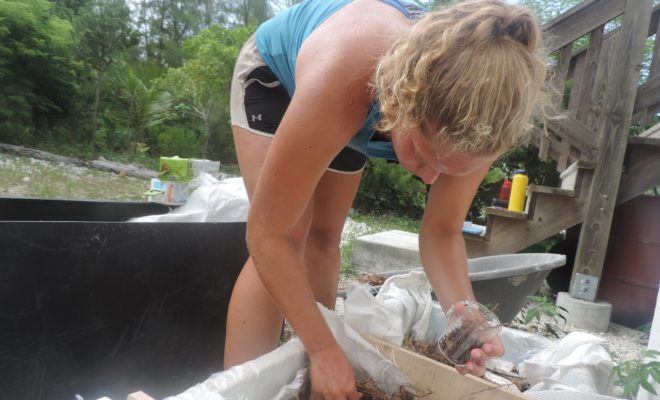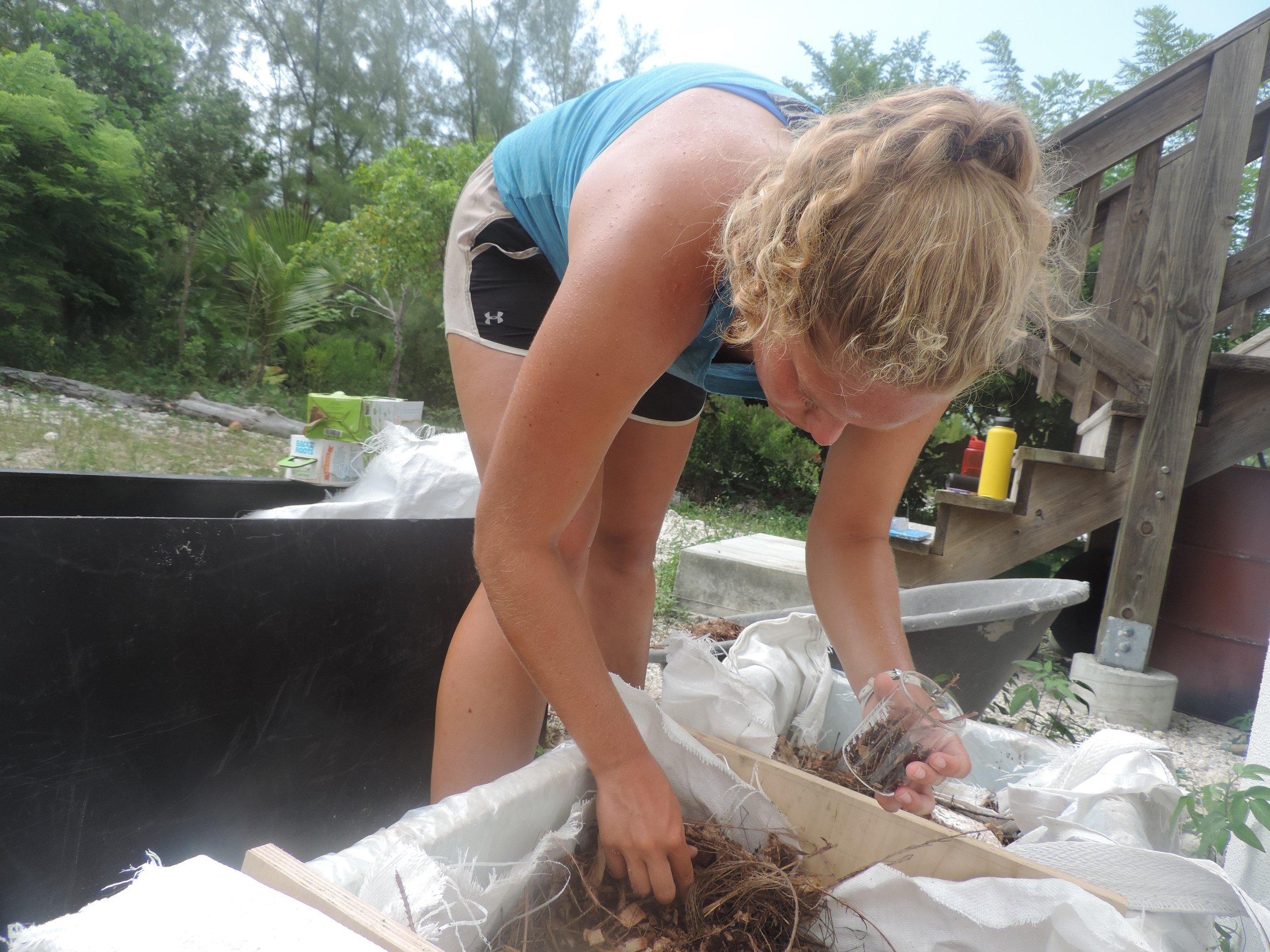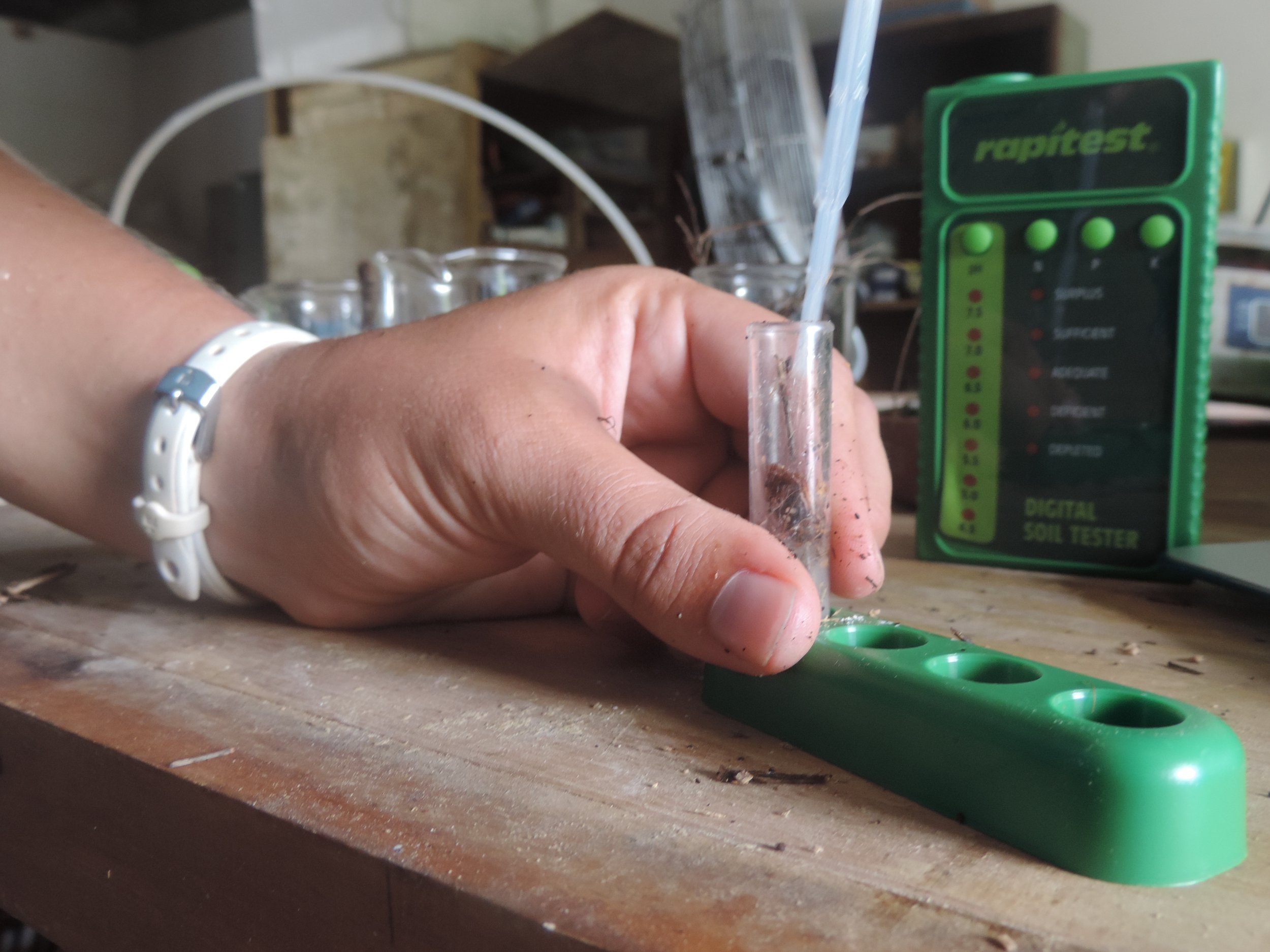CSD pursues new project to convert glycerol waste.
Two small, unassuming boxes sit under the window in the small kitchen at the back of the Center for Sustainable Development. Small and cardboard they could easily be dismissed– but in actuality these boxes are the important first step to a unique ecological project driven by CSD intern Kelly Rhodes.
Inside the boxes are mushroom spores. The intention is for these mushrooms to inoculate in the boxes so they can eventually convert glycerol waste into a useful resource. This process is called mycoremediation, and it is an exciting opportunity to rethink the impacts of waste on our own campus.
As fossil fuels and waste continue to degrade our environment, scientists are experimenting with creative, alternative methods of turning waste into resources.
CSD employees and interns are excited to join these efforts!
Kelly collects samples of soil and wood chips for preliminary testing of the glycerol and pH levels in the soil.
This project is an extension of another CSD venture that uses left over cooking oil from cruise ships to make biodiesel. At the end of the biodiesel process there is leftover glycerol waste which was previously stored on campus. This new project, however, is finding a way to turn that waste into useable soil!
There are many environmental benefits to this project including reducing the amount of waste on campus, decreasing the amount of soil that needs to be shipped in and removing the invasive Casuarina tree, which is used to help grow the mushrooms and produce the soil.
The soil and woodchips are mixed with a pH indicator capsule and water to measure the glycerol content in the soil. If the pH numbers increase throughout the process — meaning the soil becomes less acidic — it will demonstrate that the mushrooms are successfully converting the glycerol into usable soil. Nitrogen and carbon levels will also be tested.
This project is just getting started but we are already so excited to see how it grows! In the future, Kelly will continue improving upon this project as her senior capstone project and interns and staff at CSD will continue to test the health of the soil. They hope to eventually increase the size of the grow beds and subsequently increase the amount of glycerol used in order to make more soil that can be used on the campus!


